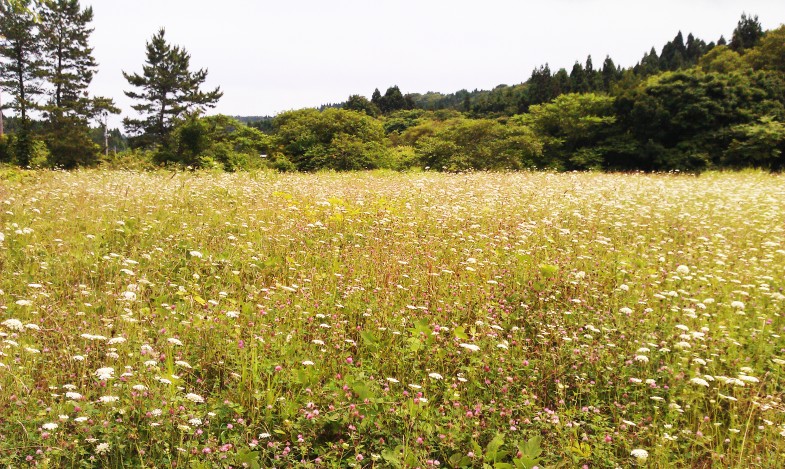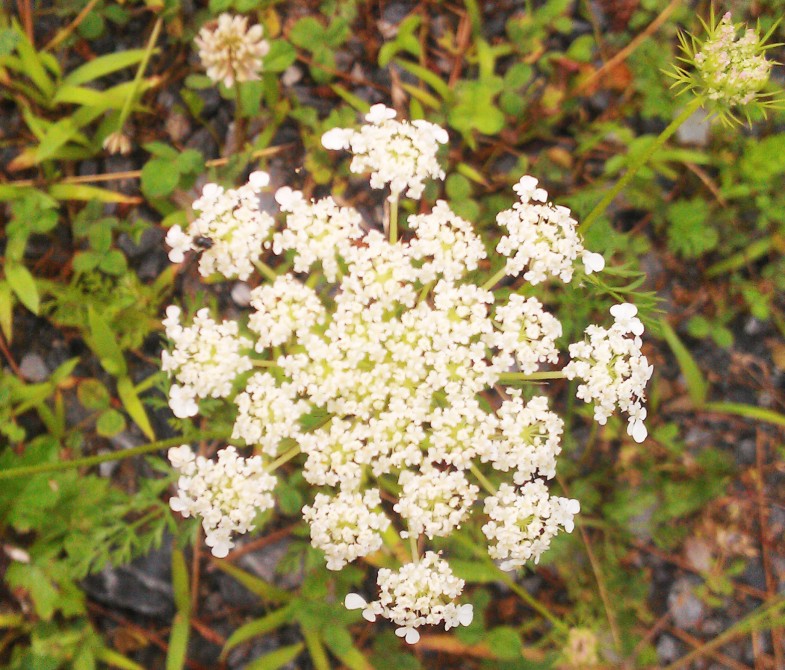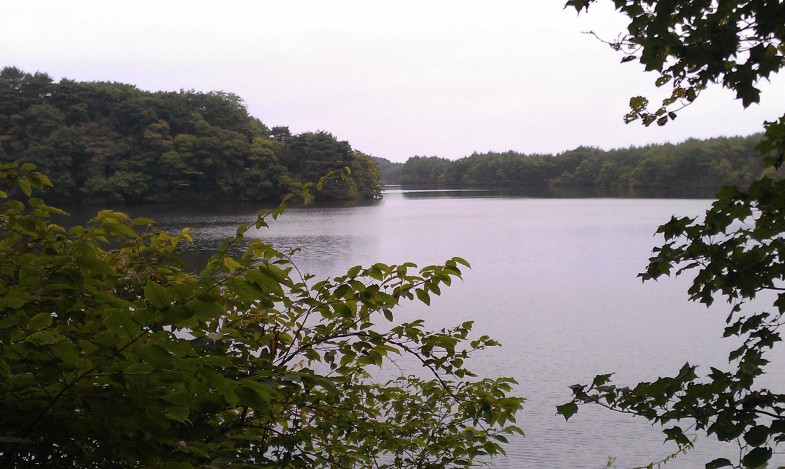
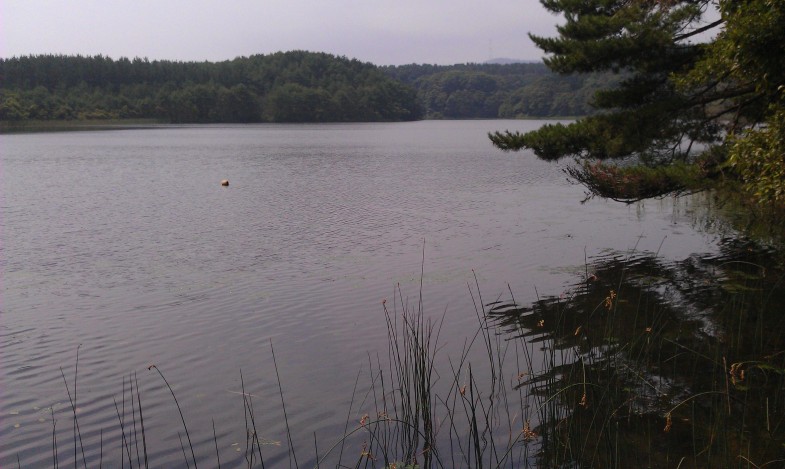
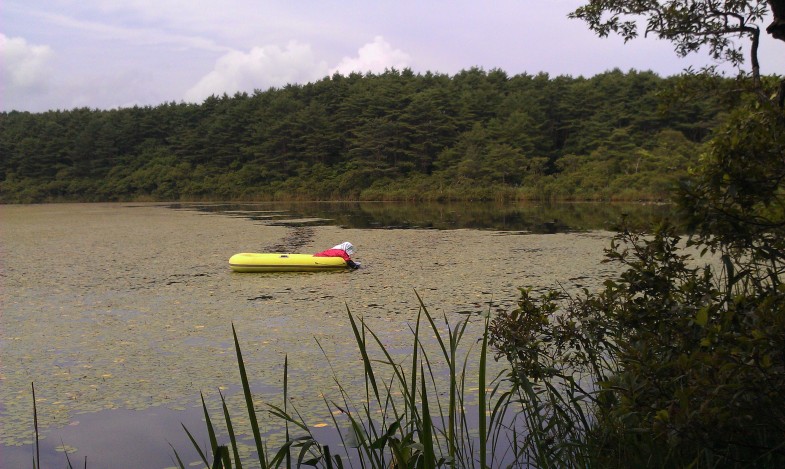
Smėlio kopų ežeras yra smėlio paplūdimys, kuris dėl vėjo formuoja bangas.、Tai gėlavandenės pelkės, kurios natūraliai susidaro upėms įtekėjus į įdubas (Sagata, Niigata prefektūra ir kt.)。Povandeninis smėlis dėl vandenyno srovių ir bangų išsipučia kaip pylimas, blokuodamas išėjimą.、(Jis susidaro kitaip nei sūraus vandens ežerai, tokie kaip Saromos ežeras ir Hachirogata)。Pats kopų ežeras yra vertingas darinys, kuris nyksta visame pasaulyje.、Biologiškai vertingos aplinkos kūrimas。
Sand dune lake is a natural freshwater pond in a sandhill. It was shaped by wind. The wind had been carring sand and formed ups and downs, and then water stream into hollow places. It is not only very valuable existence itself in the world but also it gives important environment for biodeversity that’s being lost.
Higashidori kaime、Yra daug didelių ir mažų „smėlio kopų ežerų“ (vien 13 pavadintų pelkių)。Higashidori kaimas, Sarugamori smėlio kopos ir Back Wetlands buvo atrinkti į vieną iš 500 Japonijos svarbių pelkių (tiesą sakant, galima sakyti, kad tokiu būdu buvo atrinkta didžioji Šimokitos pusiasalio dalis).。Ši beždžionė ga miško smėlio kopa (plotis 1-2 km)、„Shimokita smėlio kopos“ – tai smėlio kopų (bendras ilgis 17 km) ir šiek tiek į vidų einančių smėlio kopų derinys.、Nors tai mažai žinoma, tai iš tikrųjų yra didžiausia smėlio kopa Japonijoje.。Priežastis, kodėl tai nežinoma, yra、Smėlynus supa vėjo ir smėlio apsaugos miškai.、Dalykai, kuriuos žmonėms sunku pamatyti、Didžiąją jo dalį Gynybos ministerija ir kiti naudoja kaip balistinių bandymų poligoną.、Taip yra todėl, kad įėjimas draudžiamas.。
There are many dune lakes in Higashi-dori village. Named lakes are minimum 13s. Salugamori sandhill (1~2 km width, 17 km length) include the rear wetland in this village has selected one of 500 of the important wetland of Japan (Actually most of Shimokita peninsula is selected also). Additionaly, Shimokita sandhill (includ this Salugamori sandhill with the next ones) is really the biggest one in Japan. However almost all japanese don’t know of it. One of the reason is that this place is hidden from the roads by pine grove for protect the wind and the sand. The other one, here is off limited, because this ares has been useing for test site of trajectory of Ministry of Defence (MD).
Pats kopų ežeras yra už Gynybos ministerijos teritorijos ribų.、Atrodo, kad kai kurie iš jų naudojami ir žvejybos tikslais.。Tačiau išaugo ir pušynai, naudojami apsaugai nuo vėjo ir smėlio.、Daugelis kelių, vedančių į pelkę, nyksta.。Čia taip pat tęsiasi gyventojų mažėjimas ir senėjimas.、Šiuo metu akademiniai tyrimai neatliekami.。
These are out of the area of MD. A few lakes of it look as useing fishery sometimes but not often. Most of the roads to go there is being lost by growing thickly weeds and pine grove. Creasing depopulation and ageing there. Academic reserch stopped now.
Nuotraukos iš viršaus į apačią (išdėliotos iš šiaurės į pietus)、Onuma、Sakyo pelkė、Aranuma。Dydis ir gylis šiek tiek skiriasi, tačiau jie visi yra natūralios būklės.。Onuma yra didelė krevetė、Sakyo-numa garsėja Aegagropila Linnaei.、Kas atsitiks dabar, kai neatliekami jokie tyrimai?。Aranuma yra 1-2 m gylyje.、Nuimamas Brasenia schreberi derlius.。
Photo:(above) O-numa. Small river prawn lives in. (midlle) Sakyo-numa. Sakyo-numa is famous for “Hime-malimo” (small moss ball), but how is it now? (bottom) An old woman was picking “Jun-sai” (the water shield) from the water at lake Ala-numa. ※numa means lake or pond. All of dune lakes are Nature.
